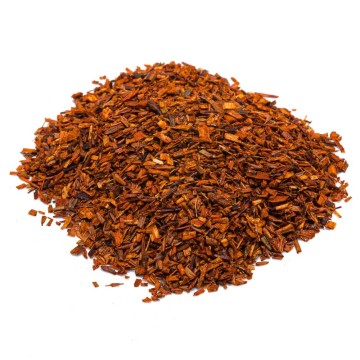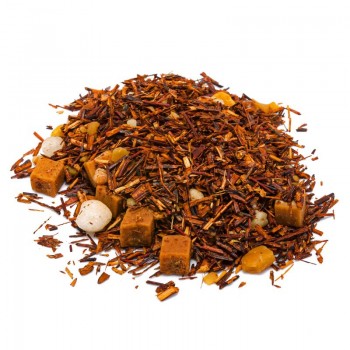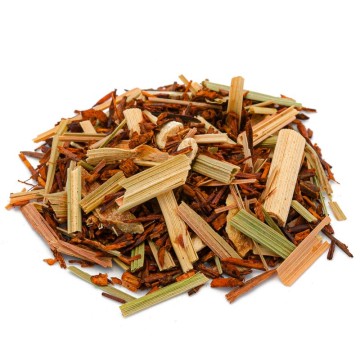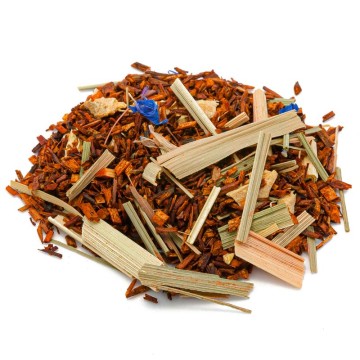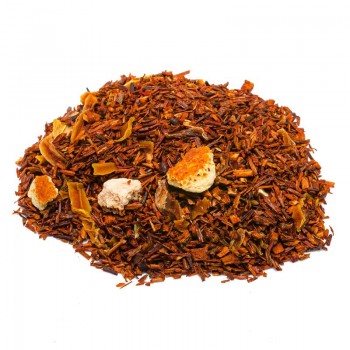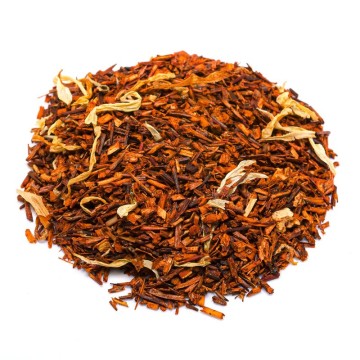The combination of orange and chocolate is a classic, the orange chocolate bar is produced by all or almost all the major brands. Combining the combination of orange and chocolate with red rooibos tea offers a blend in which the flavors balance each other: the chocolate has a warm taste that is balanced by the freshness of the orange and also by the taste of the rooibos which is quite similar to that of a normal tea but is sweeter, so much so that it can be drunk without sweetening it. But let's take a closer look at these three ingredients.
The ingredients of the Rooibos orange and chocolate infusion
Calling rooibos tea would not be correct, at least not from a botanical point of view, because only the infusion obtained from the oriental plant Camellia sinensis (sinensis means native to China) should be called tea, instead rooibos is obtained from a plant native to the Cederberg (an area of South Africa) called Aspalathus linearis. The adjective linearis refers to the elongated shape of the leaves, instead the name rooibos is an Afrikaans word meaning "red bush", except that the bush is not red at all, the leaves are green. However, they become red due to oxidation during the fermentation phase that precedes drying in the process to obtain rooibos. Therefore, the plant and product are called by the same name and the name comes from the product not the plant. A curiosity that is actually a strong historical clue to the fact that if the locals have known and used the plant for centuries, instead the rooibos product, which does not have a corresponding name in the languages of the local people, was invented by the colonists as an alternative to tea which was difficult and/or too expensive for them to find. The leaves of the plant are very rich in antioxidants, especially flavonoids, but in all fairness it must be said that the fermentation process we talked about above reduces them considerably. An undeniable quality of rooibos is that it is naturally caffeine-free.
Cocoa, on the other hand, is originally from America, notoriously the pre-Columbian populations, who consumed it as an unsweetened drink, considered it a drink of the gods and it was consumed by nobles and priests in ceremonies. The plant from which cocoa is obtained is a small evergreen tree of the Malvaceae family called Theobroma cacao, the name theobroma which means “food of the gods” was given to it by Linnaeus probably thinking about the customs of the indigenous populations. The Europeans who did not like the bitter and spicy drink that the natives consumed when they imported cocoa to the Old Continent began to sugar it or sweeten it with honey and it immediately became a success. We will have to wait three centuries to arrive at the solid chocolate bar, thanks to technological innovations introduced in Holland, the discovery of the process of separating cocoa butter from cocoa, fundamental to arrive at the bars is attributed to the Dutch chemist Coenraad Johannes van Houten. Finally the orange, with the orange we touch the third non-European continent, it is in fact a plant native to Asia, probably from the region composed of south-east China, north-east India and Myanmar. We are of course talking about the area of origin, but we know well how the orange is now widespread throughout the world in areas with a suitable climate, intensively cultivated in southern Italy and Spain, it has also spread to the New Continent, the two US states with a suitable climate, California and Florida, are large producers.
Yet the history of Citrus × sinensis in the West is shorter than one might think, if the first introduction was by the Moors in Spain (10th century) and then in Sicily, in reality only with the massive importation by Portuguese merchants at the beginning of the 16th century will the definitive explosion take place, in the middle of the following century the sweet orange was finally known throughout Europe.











 No reward points for this product.
No reward points for this product.

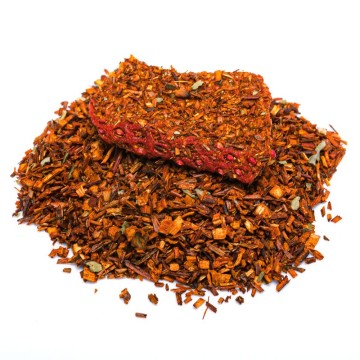

![rooibos cioccolata calda [Natura d'Oriente]](https://www.naturadoriente.com/3513-home_default/rooibos-hot-chocolate.jpg)

